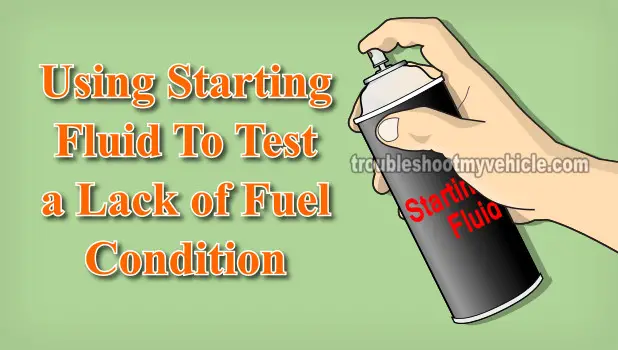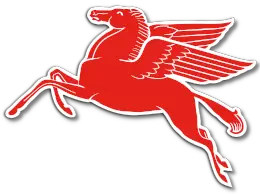
The fuel pump is easily tested with a fuel pressure test gauge. In this tutorial, I'll explain how to do it step-by-step.
With your test results, you'll easily and quickly determine if the fuel pump is behind your vehicle's engine no-start problem or an engine performance problem.
Contents of this tutorial:
- Symptoms Of A Bad Fuel Pump.
- Where To Buy A Fuel Pressure Test Gauge.
- Buick Rendezvous Fuel Pump Pressure Specification.
- Oldsmobile Alero Fuel Pump Pressure Specification.
- Oldsmobile Silhouette Fuel Pump Pressure Specification.
- Using A Fuel Pump Pressure Tester To Test The Fuel Pump.
- Using Starting Fluid.
- More 3.4L V6 Buick, Oldsmobile Tutorials.
APPLIES TO: This tutorial applies to the following vehicles:
- 3.4L V6 Buick Rendezvous: 2002, 2003, 2004, 2005.
- 3.4L V6 Oldsmobile Alero: 1999, 2000, 2001, 2002, 2003, 2004.
- 3.4L V6 Oldsmobile Silhouette: 1996, 1997, 1998, 1999, 2000, 2001, 2002, 2003, 2004.
ENGINE NO-START DIAGNOSTICS:
Symptoms Of A Bad Fuel Pump
The fuel pump is a critical component of the engine management system; when it fails, the engine is going to resent it.
Generally, a faulty fuel pump causes one of two major problems:
- An engine no-start problem
- - or -
- An engine performance/driveability problem.
If the fuel pump is still supplying enough fuel to start the engine but not enough to keep it running optimally under load, you'll see one or more of the following symptoms:
- The engine takes longer than usual to start (extended cranking).
- The engine idle is very rough.
- The engine backfires thru' the intake manifold under load.
- The engine starts then dies.
Where To Buy A Fuel Pressure Test Gauge
A fuel pressure test gauge is a must-have tool to test the fuel pump on your 3.4L V6 Buick or Oldsmobile.
The following fuel pressure gauge kits will easily connect to the Schrader valve on the fuel injector rail of your vehicle's 3.4L engine.
Disclosure: As an Amazon Associate, I earn from qualifying purchases. If my tutorials help you, using these links is an easy way to support the site at no extra cost to you. Thank you!
Buick Rendezvous Fuel Pump Pressure Specification
| 2002-2005 3.4L V6 Buick Rendezvous | |
|---|---|
| KOEO | KOER |
| 52-59 PSI | Fuel pressure should drop 3 to 10 PSI |
Oldsmobile Alero Fuel Pump Pressure Specification
| 1999 3.4L V6 Oldsmobile Alero | |
|---|---|
| KOEO | KOER |
| 40-47 PSI | Fuel pressure should drop 3 to 10 PSI |
| 2000 3.4L V6 Oldsmobile Alero | |
|---|---|
| KOEO | KOER |
| 48-55 PSI | Fuel pressure should drop 3 to 10 PSI |
| 2001-2004 3.4L V6 Oldsmobile Alero | |
|---|---|
| KOEO | KOER |
| 52-59 PSI | Fuel pressure should drop 3 to 10 PSI |
Oldsmobile Silhouette Fuel Pump Pressure Specification
| 1996-1999 3.4L V6 Oldsmobile Silhouette | |
|---|---|
| KOEO | KOER |
| 40-47 PSI | Fuel pressure should drop 3 to 10 PSI |
| 2000-2004 3.4L V6 Oldsmobile Silhouette | |
|---|---|
| KOEO | KOER |
| 52-59 PSI | Fuel pressure should drop 3 to 10 PSI |
Using A Fuel Pump Pressure Tester To Test The Fuel Pump

In the photo above, you'll notice the location of the Schrader valve (next to the power steering pump reservoir).
To the Schrader valve, we'll connect the fuel pressure test gauge and check the fuel pump pressure.
NOTE: If you don't have a fuel pressure tester with the correct adapter, take a look at this section: Where To Buy A Fuel Pressure Test Gauge.
OK, these are the test steps:
- 1
Place a shop towel under the Schrader valve. The shop towel's job is to absorb any fuel that may leak when doing step 2.
- 2
Connect the fuel pressure gauge to the Schrader valve.
Most fuel pressure gauges can be connected to the Schrader valve without an adapter. If yours isn't one of them, connect the correct adapter to the Schrader valve and then connect the gauge to it. - 3
When ready, ask your helper to cycle the key ON and OFF but don't crank the engine while checking for fuel leaks.
If no fuel leaks, go to next step.
If fuel is leaking, resolve the leak before continuing to the next step . - 4
Crank the engine and observe the fuel pressure gauge.
- 5
The fuel pressure gauge should register the specified fuel pressure.
Let's take a look at your fuel pressure test results:
CASE 1: The fuel pressure test gauge registered 0 PSI. This test result confirms your vehicles no-start problem is due to a lack of fuel.
You can conclude that the fuel pump is not functioning and is the cause of the engine's no-start problem.
CASE 2: The fuel pressure gauge registered the indicated fuel pressure specification. This is the correct and expected test result and it confirms that the fuel pump is OK.
For more troubleshooting suggestions, take a look at the following engine no-start tutorial:
CASE 3: The fuel pressure gauge registered a fuel pressure way below the specification. This test result lets you know that the fuel pump is failing. Replace the fuel pump.
Using Starting Fluid

I've been using the starting fluid test to diagnose a no-start problem for as long as I can remember.
It's the first test that lets me know in what direction to take my no-start diagnostic.
Although the starting fluid test will confirm that the engine is not starting due to lack of fuel, it's not the most accurate way to diagnose a bad fuel pump.
I still test the fuel pump pressure with a fuel pressure test gauge even after the starting fluid test has confirmed a lack of fuel condition.
IMPORTANT: To get the most accurate test result from this test you need to first make sure that all 6 spark plug wires are sparking. If you haven't already, test all 6 spark plug wires for spark with a dedicated spark tester.
OK, let's get testing:
- 1
Remove the intake air duct from the throttle body.
You don't have to completely remove it, since you'll have to reconnect it in one of the next steps. - 2
Open the throttle manually, and spray starting fluid down the bore.
When you have sprayed a good squirt of starting fluid, quickly reconnect the air duct to the throttle body (you don't have to tighten the hose clamp).
Reconnecting the intake air duct is a very important safety precaution in case you get a back-fire thru' the intake manifold. - 3
Crank the engine once the intake air duct is back on the throttle body.
- 4
You'll get one of two results with this test:
1.) The engine will start momentarily and after a few seconds will die.
2.) The engine will only crank but not start at all.
OK, let's find out what your results mean:
CASE 1: The engine started and ran for a few seconds. This test result tells you that the engine notes our problem is due to a lack of fuel.
Usually this means that the fuel pump is bad but you still have to make sure with a fuel pressure test gauge.
For this test go to: Using A Fuel Pump Pressure Tester To Test The Fuel Pump.
CASE 2: The engine did not start, not even momentarily. This test result generally tells you that you are Vehicles no-start problem is not due to a lack of fuel. Still, I recommend doing a fuel pressure test to make sure.
For this test go to: Using A Fuel Pump Pressure Tester To Test The Fuel Pump.
More 3.4L V6 Buick, Oldsmobile Tutorials
You can find a complete list of 3.4L V6 Buick (Oldsmobile) tutorials in this index:
Here's a small sample of the tutorials you'll find in the index:
- How To Test Engine Compression Test (3.4L V6 Buick, Oldsmobile).
- How To Test A Blown Head Gasket (3.4L V6 Buick, Oldsmobile).
- What Does The CKP Sensor Do? (3.4L V6 Buick, Oldsmobile).
- How To Test The Throttle Position Sensor (3.4L V6 Buick, Oldsmobile).

If this info saved the day, buy me a beer!





